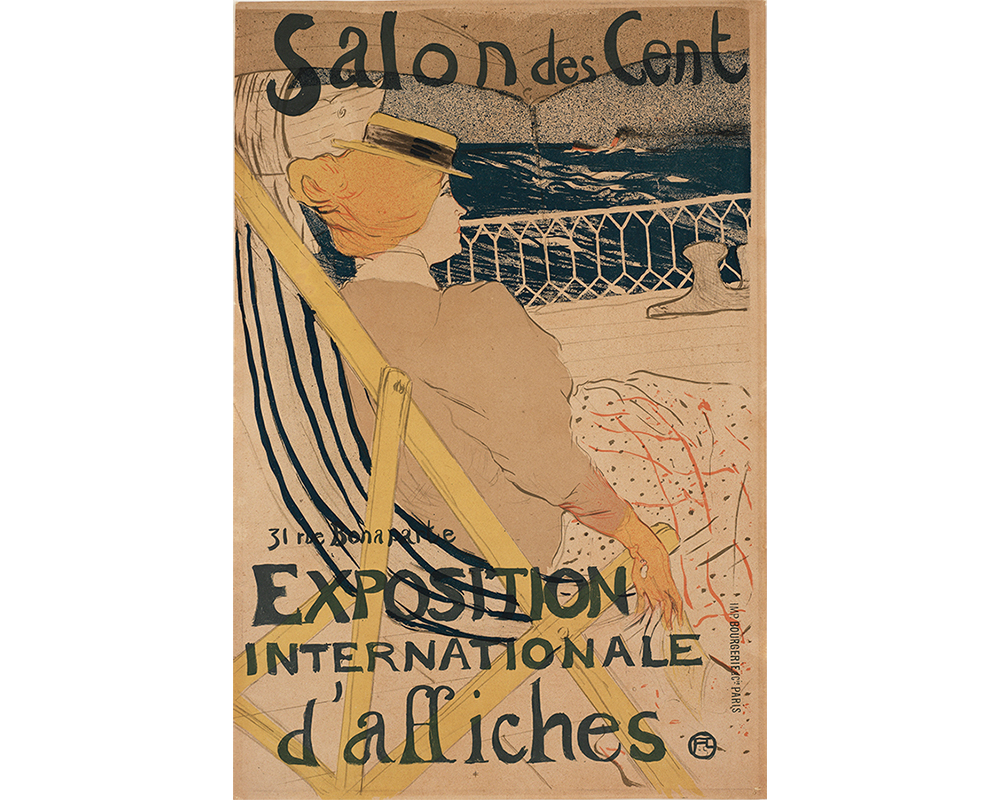
A Discerning Eye
Guest blogger Saraphina Masters is a Smith College student, class of 2017, majoring in Classical Studies and Art History. She is the 2013-2015 STRIDE Scholar in the Cunningham Center for Prints, Drawings, and Photographs.
As is often the case when I am conducting research on works of art or individuals, I came across far too much fascinating information on Selma Erving to relegate to a label with a limited word count. My main source of information about Ms. Erving and her relationship was the book Nineteenth and Twentieth Century Prints: The Selma Erving Collection, prepared and published by the Smith College Museum of Art in 1985. The two introductory essays were written by then-director Charles Chetham as well as Elizabeth Mongan, curator emeritus and former art history professor at Smith. Both of these essays revealed a great deal of material about Selma’s life and her character.
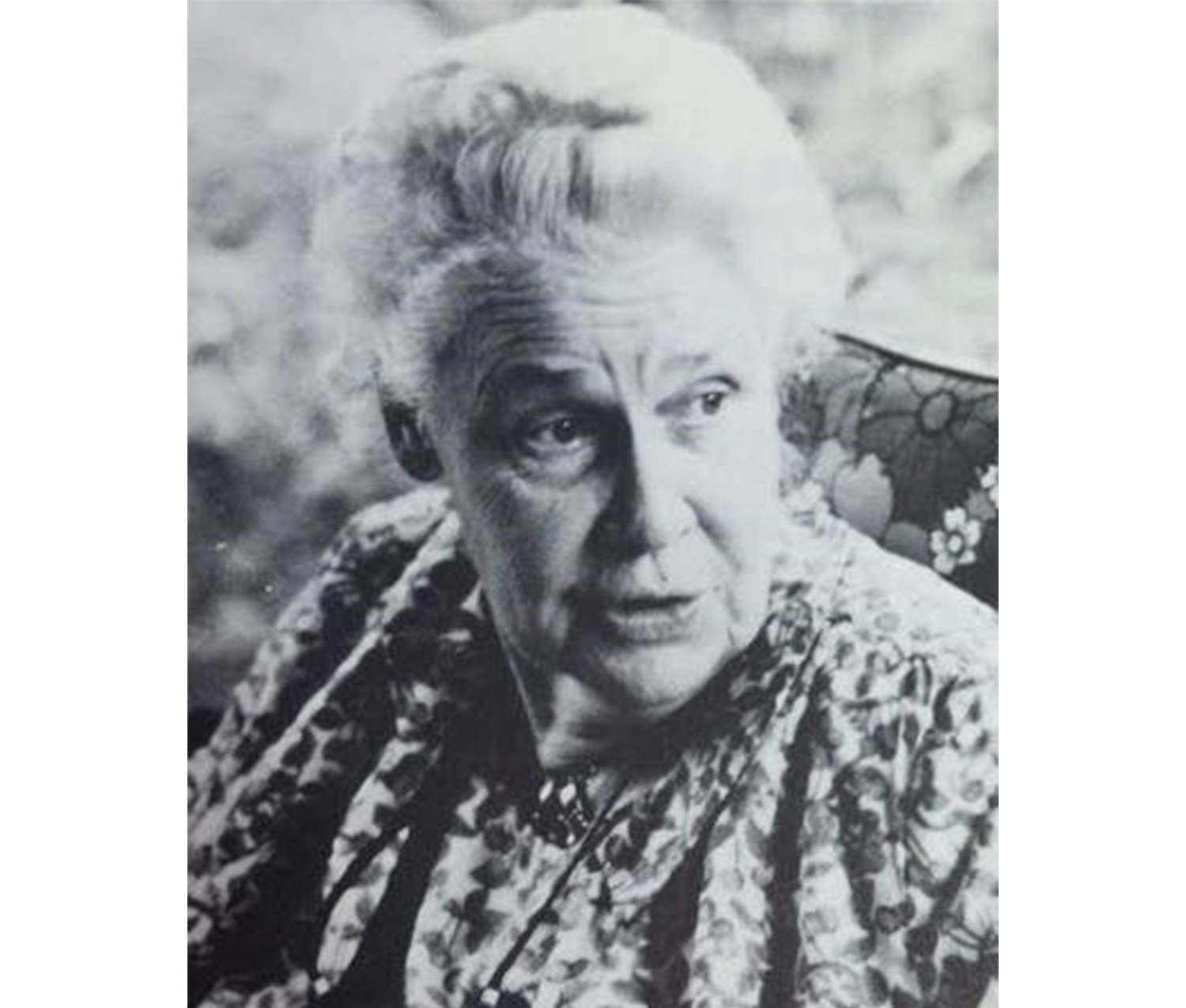
Selma Erving, from a photograph by Mrs. John C. White
Selma Erving was born in 1906 to a family closely connected to art. For over sixty years, her grandfather Henry Wood Erving had been one of the first collectors of American furniture, and had a collection recognized by many in the field. As a young woman, her mother, Emma Lootz Erving, had been a roommate and friend of Gertrude Stein and subsequently acquired a great appreciation of art. Her father and elder brother also collected various kinds of art. However, both her parents made their living as medical doctors and Selma herself had intended to follow in their footsteps. After graduating from Smith College in 1927, where she was a member of both the Colloquium Club and the Granddaughter’s Club, she went to Johns Hopkins Medical School.
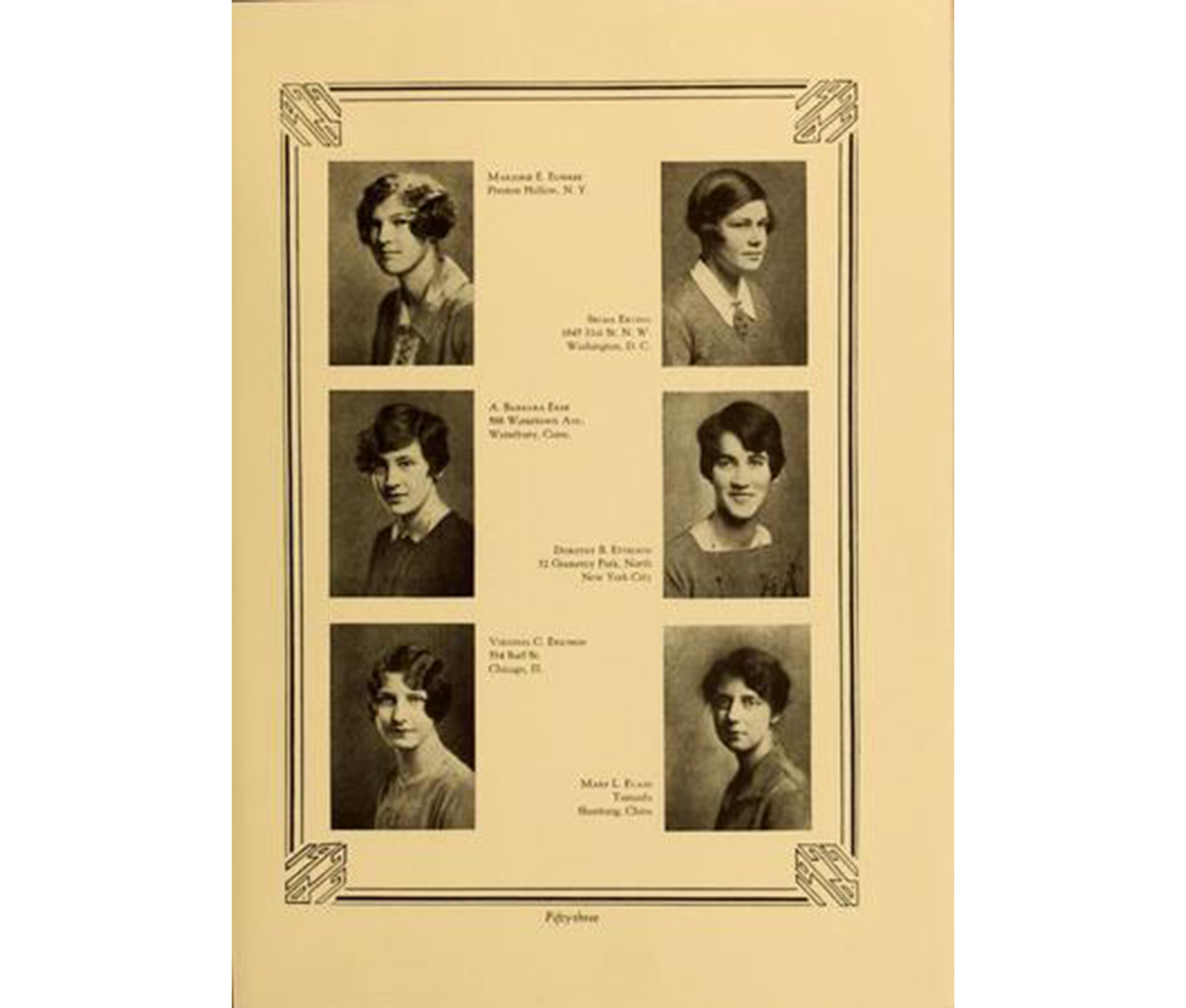
Senior yearbook from Class of 1927, Selma Erving at top right. Courtesy of Smith College Archives
However, after her first year, she developed tuberculosis, an illness that would keep her from completing her degree and starting a practice. Not one to languish or be idle, she turned her discerning mind and active disposition to the collection of art. With the help of her friend and advisor Jon Wyss, a Swiss dealer and framer, Selma bought from auctions and dealers alike. Her collection, which contained over 700 items, came to the attention of the Smith College Museum of Art (SCMA) when Miss Erving contacted Charles Chetham, the director at the time, in search of a paper conservator. He recommended the well-known Christa Gaehde, who upon seeing the Erving collection, was “overwhelmed” and made note to Chetham of its “unusual quality”.
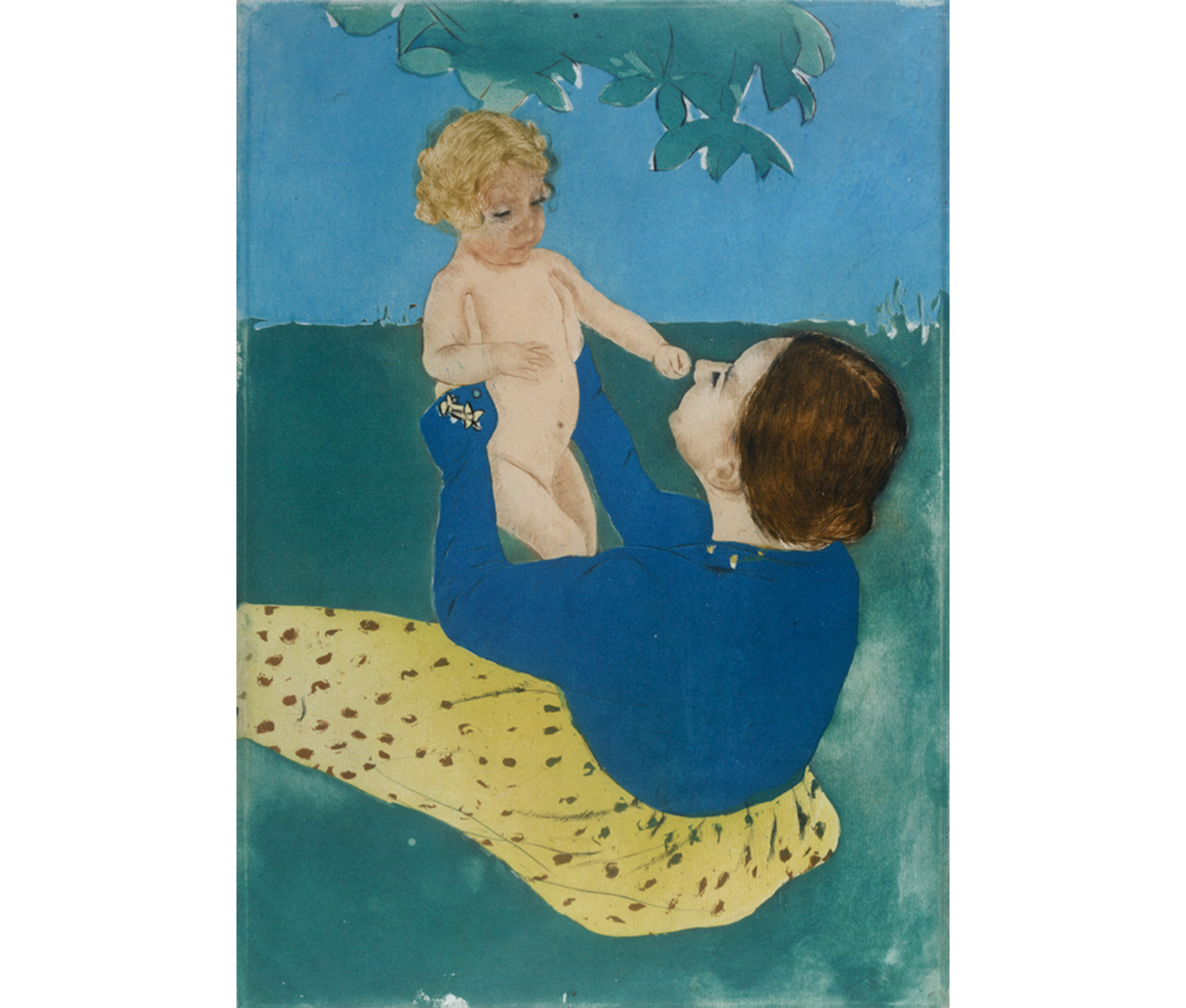
Mary Cassatt. American, 1844–1926. Under the Horse Chestnut Tree, ca. 1895. Drypoint and aquatint printed in blue, green, yellow, brown, and flesh on off white laid paper. Gift of Selma Erving, Class of 1927. SC 1972.50.8.
Once Chetham was finally able to visit Selma in her home in West Hartford and see her collection, he was utterly taken with the quality of the pieces and with the quiet yet courageous character of Selma herself. He described her as “capable of the keenest perceptions about quality in art and quality in people”, an attribute that is made obvious in her collection. Her home in Hartford, which was to be visited often by staff members from the SCMA, contained a living room that Chetham describes as “covered with prints and drawings of a splendor that came as a considerable shock”. Much of her collection was assembled with intent, but one notable piece has a rather serendipitous and anecdotal story. Above her mantel hung a painting by Edvard Munch that her grandfather, a Norwegian Vice-Consul, had won by chance in a raffle at a time when the artist was still unknown (image below).
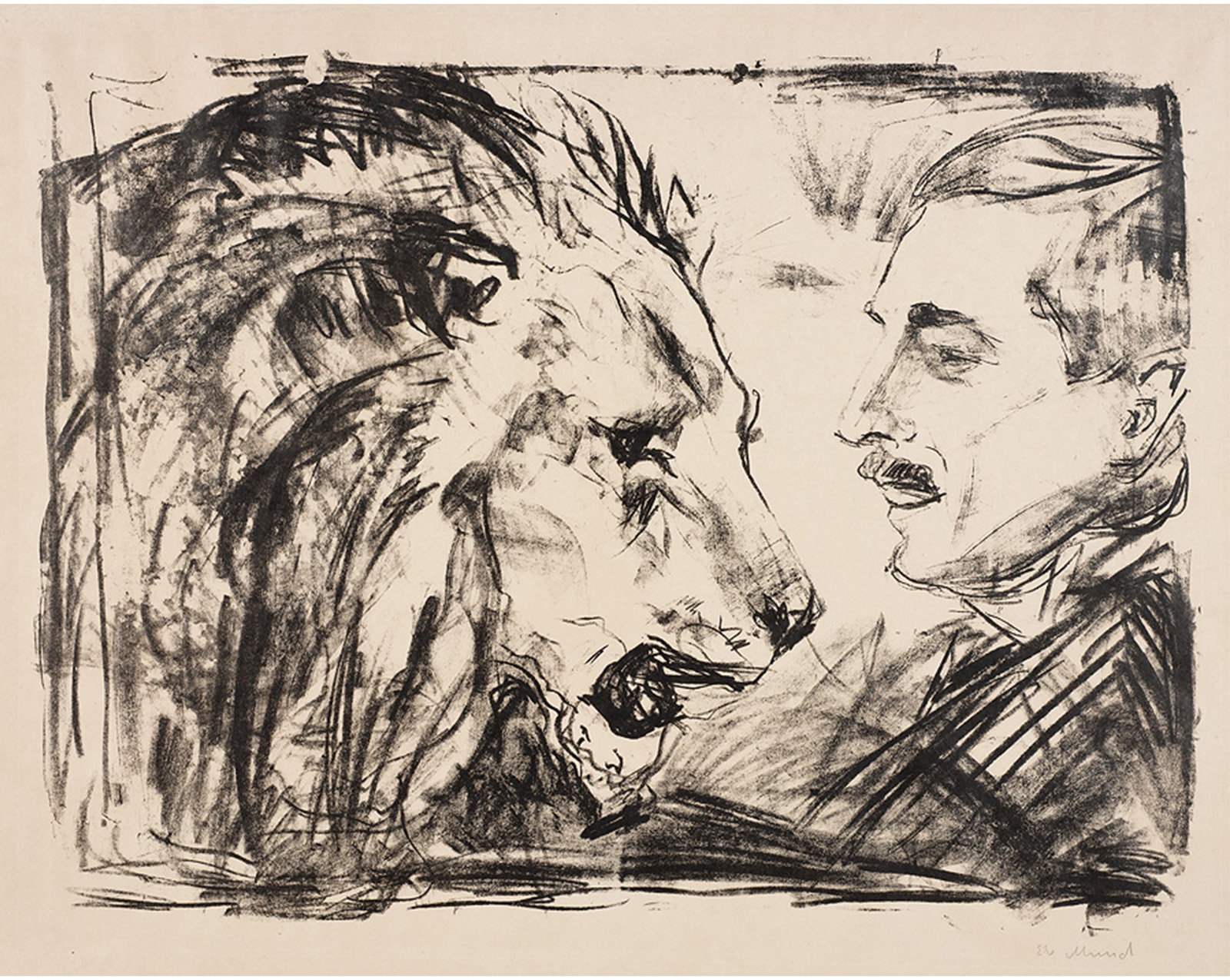
Edvard Munch. Norwegian, 1863–1944. The Lion Tamer, 1903–1916. Lithograph printed in black on wove paper. Gift of Selma Erving, Class of 1927. SC 1978.1.17.
Through a continued relationship with the SCMA, Selma provided guidance for the growing collection of works on paper. Described by Chetham as a “gentle perfectionist”, she was attentive to the Museum’s plans for developing a more focused dedication to works on paper. In fact, it was the promise of her excellent, expansive collection to Smith that influenced and supported Chetham’s argument for a large and accessible Print Room. Selma, keenly and with great interest, advised Chetham and the Museum’s first prints specialist, Elizabeth Mongan, in the ensuing creation and flourishing of the Prints Room as it was funded by Priscilla Cunningham (Class of 1958), in memory of Eleanor Lamont Cunningham (Class of 1932). In 1975, President Jill Ker Conway dedicated a print exhibition gallery in honor of Miss Erving. True to her humble character, Selma only consented to attend the dedication of the eponymous gallery on the condition that no attention would be called to her presence.
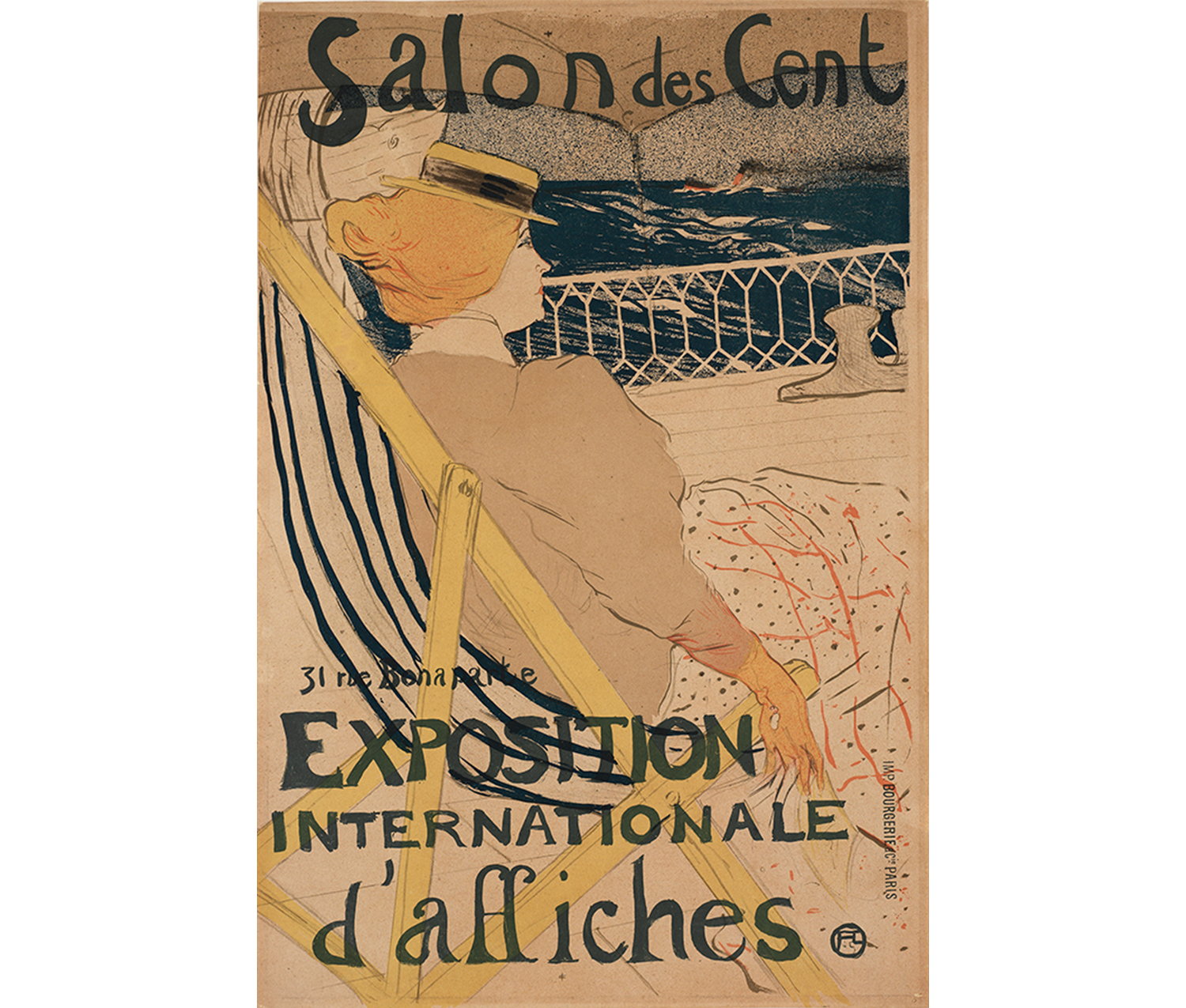
Henri Toulouse-Lautrec. French, 1864–1901. La Passagère du 54 - Promenade en Yacht; Expostion Int'l d'offiches., ca. 1896. Crayon, brush and splatter lithograph in olive green, beige, red, yellow, blue, black, and dark gray-blue on beige wove paper. Bequest of Selma Erving, Class of 1927. SC 1984.10.76
The file pertaining to Miss Erving in the Museum’s records is overflowing with staff members singing her praises. Elizabeth Mongan, upon receiving a gift of works from Selma declared that the Museum was “basking in a wonderful euphoria”. This testimony and others about her material and intellectual generosity paint a fascinating picture of a fascinating woman. Pieces donated by Selma have been featured in five exhibition thus far at the SCMA and in 1975 a Smith seminar coordinated an exhibition from her collection. . In addition, the Selma Erving collection is known outside of Smith and New England, with acclaim coming from the director of the Cleveland Museum of Art and more. This follows the wishes of Miss Erving; that her art and her resources would be used to educate and enlighten. As perhaps her greatest admirer, Charles Chetham articulately summed up the impact Selma and her collection had and continues to have.
“For the years to come student who use Miss Erving’s collection will make contact through it a rare and unusual spirit, and, perhaps without knowing it, will be guided to the perception of great quality”
Works donated by Selma Erving are now on view on the second floor of the Museum in the Cunningham Center corridor as part of the exhibition Figure and Image: The Selma Erving Collection until May 3rd, 2015.